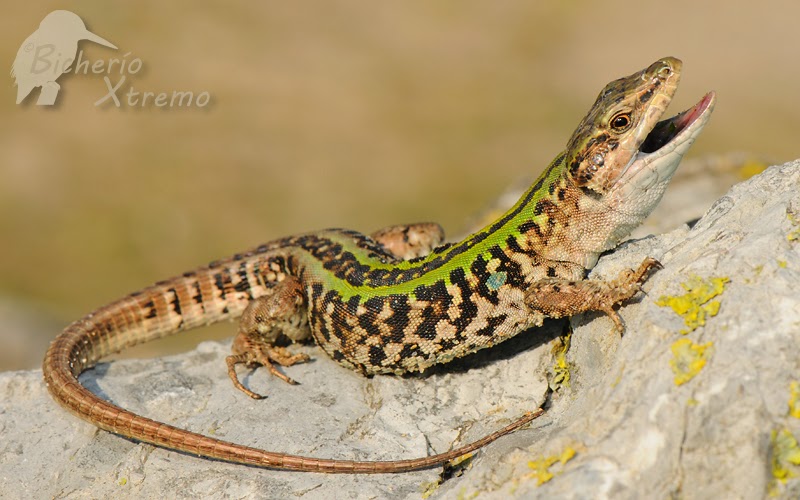 | El pasado viernes me acerqué a Noja para ver las Lagartijas italianas (Podarcis sicula) habitan en las dunas de Ris. Se trata de una especie alóctona introducida accidentalmente en estas dunas durante la década de los ochenta. Espero que os gusten las imágenes que pude tomar… Leer más. |





Recently somebody asked me «Why do snakes have two penises?» When I tried to answer, I realized that I didn’t really know. I did know that they only use one at a time, and I had once heard that it was so that they could copulate with a female no matter which side she was on, but that doesn’t really seem to make sense to me any more, especially considering that lizards also have two penises. Leer más.
his large Burmese python, weighed 162 pounds and stretched more than 15 feet long at the time of its capture in 2009. It was caught in the Everglades and was found to have eaten an American alligator that measured about 6 feet in length. University of Florida researchers are holding the python. Leer más.
Disease isn’t the biggest killer of amphibians — that would be habitat loss — but it can be the quickest. And the chytrid fungus (Batrachochytrium dendrobatidis) in particular has been a huge worry for scientists and anyone else who cares about the world’s frogs, toads, salamanders and newts. The disease spreads through water and skin contact (mating, for instance, can be dangerous), infecting the skin of the animal and disrupting its ability to absorb water. Amphibians rely on that water absorption to control electrolyte levels; when that’s disrupted, it usually leads to death. Some 3,900 species are thought to be in trouble because of the disease, and 165 have probably gone extinct. Leer más.
 | Se trataba de un ejemplar que fue hallado en una zona de pastizal, en el interior de un parque eólico, bajo el cadáver de un buitre leonado (Gyps fulvus) colisionado con un aerogenerador. Es muy probable que el individuo estuviese termoregulando bajo el manto de plumas de la rapaz expuesto al sol. Leer más. |






